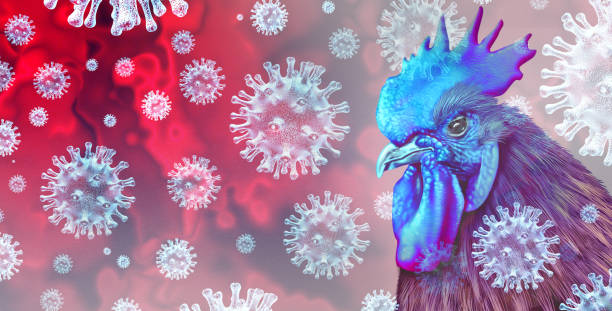More than 90 dairy herds have been infected since late March but no detections have been found in beef cattle herds.
Highly pathogenic Avian Influenza (HPAI), specifically avian influenza virus type A (H5N1), continues to spread in dairy herds across the country. At this time, no detections have been found in beef cattle herds.
According to a June 6th Reuters report with a USDA spokesperson, infected dairy cows in five states have died or been culled because they did not recover from the virus. The total number of deaths or unrecovered cows was unknown, but they took place in South Dakota, Michigan, Texas, Ohio and Colorado. State officials said some of the animals died of secondary infections after the virus weakened their immune systems.
As of June 13, H5N1 cases have been confirmed in 12 states. More than 90 dairy herds have been infected since late March: 22 herds in Idaho, 1 herd in Wyoming, 4 herds in Colorado, 8 herds in New Mexico, 18 herds in Texas, 5 herds in South Dakota, 4 herds in Kansas, 3 herds in Minnesota, 1 herd in Iowa, 24 herds in Michigan, 1 herd in Ohio and 1 herd in North Carolina. Wyoming is the latest state to detect cases, with the Wyoming Department of Agriculture confirming on June 7 detection in a dairy cattle herd.
“The primary concern with this diagnosis is on-dairy production losses, as the disease has been associated with decreased milk production,” said Hallie Hasel, Wyoming state veterinarian. “The risk to cattle is minimal and the risk to human health remains very low.”
Testing so far indicates the virus is the same clade that has been affecting birds and poultry flocks, according to the American Veterinary Medical Association. Common symptoms in affected dairy cattle include low appetite, reduced milk production and abnormal appearance of milk.
It is likely that spread occurs from bovine-to-bovine, and also from dairy cattle operations to nearby poultry facilities. Since April 29, a federal order has been in effect requiring the testing of lactating dairy cattle for HPAI prior to interstate movement.
In addition to dairy cattle, seven cats in Texas, New Mexico and Ohio also tested positive for H5N1, along with alpacas on the same premises where an HPAI-infected poultry herd was depopulated.
Federal and state agencies continue to test clinical samples and perform viral genome sequencing to learn more about the virus.
Human health risk
On May 23, the Mexico International Health Regulations reported to the World Health Organization (WHO) a confirmed fatal case of a human infected with avian influenza A (H5N2) who had been hospitalized in Mexico City, Mexico.
This is the first lab-confirmed human case of H5N2 reported globally, and the first avian H5 case in Mexico. The source of infection is currently unknown, although H5N2 cases have been reported in poultry in Mexico. The infected person, a 59-year-old, had no history of exposure to poultry or other animals, but had multiple underlying medical conditions.
“Whenever avian influenza viruses are circulating in poultry, there is a risk for infection and small clusters of human cases due to exposure to infected poultry or contaminated environments,” WHO said. “Therefore, sporadic human cases are not unexpected.”
The agency determined the risk to the general population is low.
The Food and Drug Administration (FDA) continues to share the risks of consuming unpasteurized, raw milk. “Because raw milk has the potential to contain viable (live) HPAI H5N1 virus, it represents a potential route of consumer exposure to the virus,” FDA said in a June 6 letter to state and local officials.
The agency continued that although at this time it is unknown whether the virus can be transmitted to humans through the consumption of raw milk from infected cows, exposures on affected farms have led to three documented cases of H5N1 in U.S. dairy workers.
FDA made several recommendations to states allowing the intrastate sale of raw milk. These include sharing messaging about the risk of consuming raw milk products, monitoring dairy cattle herds for signs of illness and discarding milk from symptomatic cows, implementing a surveillance testing program, and stopping the sale of raw milk that could pose a risk to consumers.
“We are committed to continuing to work with our partners to minimize the risks of HPAI H5N1 virus in raw milk and raw milk products,” FDA concluded. “We intend to share new research and data on both HPAI H5N1 virus in raw milk and raw milk products.”
The USDA and state agencies are planning to research the potential respiratory spread of avian flu among dairy cattle, according to a Reuters report. “Scientists and government officials hope the research will guide efforts to contain the virus and reduce exposure to humans. Respiratory spread could give the virus more opportunity to evolve,” the report read.











